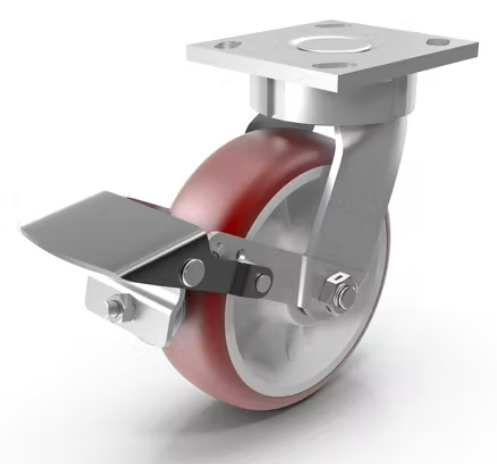
Casters make it easy to move equipment, furniture and other heavy or large objects. Consisting of a wheel attached to a plate or assembly, they allow for rolling. Rather than lifting an object to move it, you can roll it — assuming it has casters. While you may be familiar with the general concept of casters, though, there are probably some things you don’t know about them. Here are fun facts about casters that may surprise you.
#1) Swivel Casters Are Over a Century Old
Some casters are able to rotate in a 360-degree radius. Known as swivel casters, they’ve been around for over a century. The world’s first swivel caster was developed by Seibert Chesnutt. In 2020, Chesnutt filed a patent with the United States Trademark and Patent Office (USPTO) for a swivel caster.
#2) Some Casters Feature a Locking Mechanism
Whether swivel or non-swivel, some casters feature a locking mechanism. This locking mechanism essentially prevents the casters from rolling when engaged. If an object is placed on an uneven surface, such as a ramp, it may roll away. A locking mechanism prevents this from happening. When engaged, the locking mechanism will act as brakes for the casters so that they can’t roll.
#3) Casters Suffer From ‘Flutter’
Flutter is a phenomenon from which certain casters can suffer. It occurs when one of the casters on an object swigs to the left and right sides. Also referred to as shimmy, it can make the object with which the caster used unstable. Fortunately, flutter can be prevented with dampers. Dampers consist of washers that are installed around the swivel joint.
#4) Lower Risk of Injury
Casters can protect workers from injury. Moving heavy objects, of course, comes with a risk of injury. Thousands of workers are injured each year from lifting heavy objects. With casters, lifting isn’t required. Workers can move heavy objects by rolling them. Whether it’s a machine, piece of furniture or any other heavy object, casters provide an easier method of transportation. In turn, they lower the risk of injury for workers.
#5) Available in a Variety of Materials
You can find casters in a wide variety of materials. Most casters, in fact, aren’t made of a single material; they are made of multiple materials. The wheels are usually made of plastic, rubber or a similar synthetic material. In comparison, the frames in which the wheels are housed are made of a metal or alloy.
